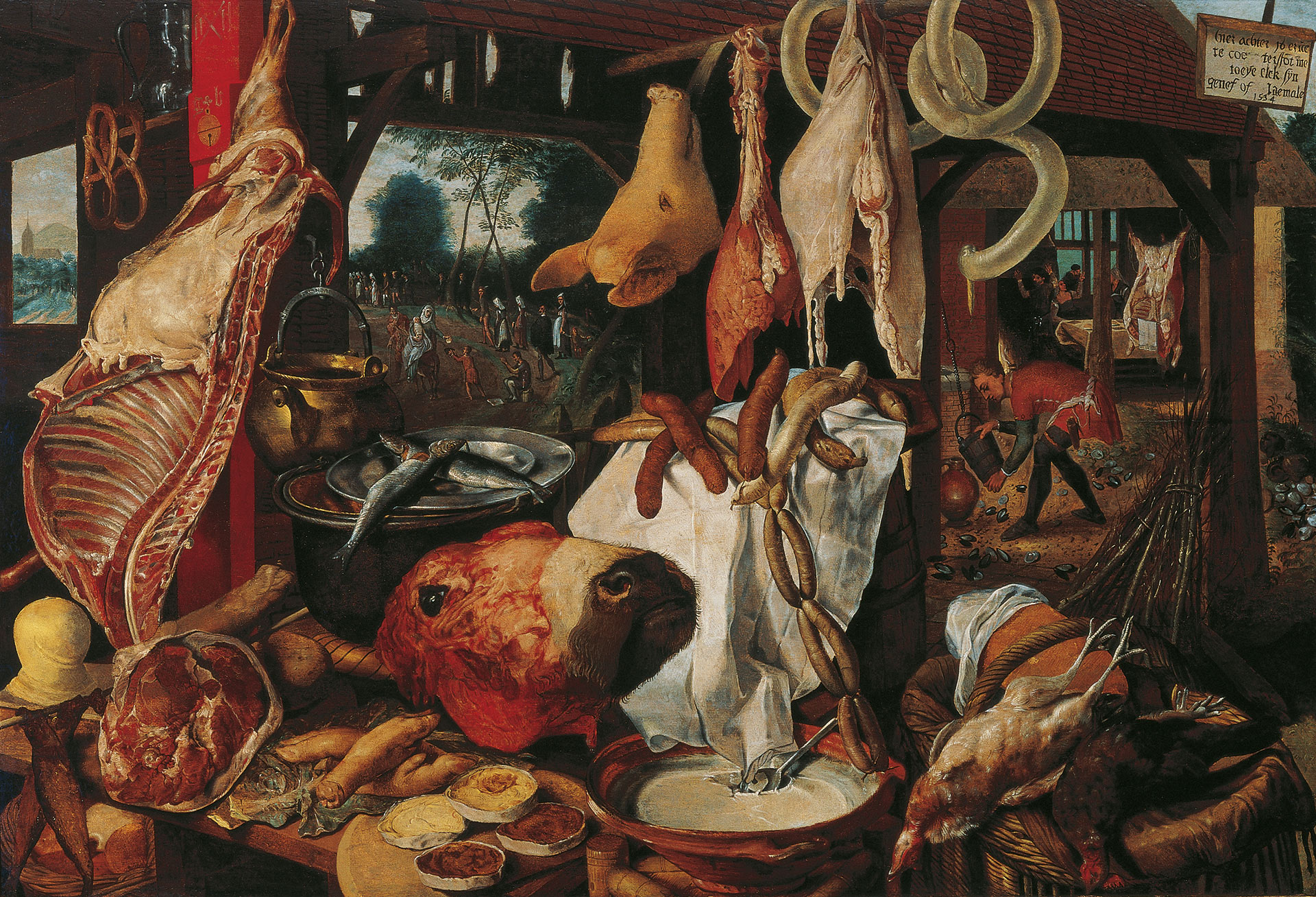
Pieter (Taller) Aertsen (Amsterdam, 1507/1508–1575)
Meat Stall with the Holy Family Giving Alms
Circa 1551
WORK INFORMATION
Oil on panel, 111 x 165 cm.
Pieter Aertsen was born in Amsterdam in 1507 or 1508 and died there in 1575. Trained in his home town, he also spent a significant part of his career in Antwerp after 1535. In addition to painting numerous altars, Aertsen produced a group of fairly innovative works in which the primary space featured a highly naturalistic still life. Most of these pictures also contain a religious scene relegated to the background.
One such work is Meat Stall with the Holy Family Giving Alms (also known as The Butcher's Stall). There are several versions of this painting, which testify to the fame achieved by the artist. This particular work, a piece of very high quality, was made in Aertsen's workshop. Two other versions in the Museum Gustavianum at Uppsala University, Sweden (dated to 1551), and the North Carolina Museum of Art in Raleigh appear to be by Aertsen himself.
The combination of religious themes with a still life implies a commentary on moral matters and attitudes towards life. In this case, the scene of the Virgin giving alms is relegated to the background. To reach it, our eyes must first take in the stall loaded with meat and innards of different animals. The image of overwhelming abundance and pecuniary interest (let us not forget that the meat we see is displayed for sale) in the foreground is compared and contrasted with Mary's selfless charity.
In an attempt to make spectators pause and meditate on these matters, the artist has referenced a contemporary occurrence in this work. The sign board in the upper right of the scene reads as follows: "Land for sale out back, by the rod if desired or altogether, 154 rods". Thus, Aertsen shows the sale not only of food but also of land, a sensitive issue in mid-16th-century Antwerp due to skyrocketing property prices in urban areas. The sale is recorded in a contemporary document found in the city archives.
In 1551 (when the original of this composition was painted), the city confiscated several plots of land and subsequently granted 154 rods to Gilbert van Schoonbeke, a man who had been tried several times on corruption charges. The profit that Van Schoonbeke made on this transaction was considered scandalous. By referencing this case, Aertsen sought to heighten the contrast between the Virgin's charity and usurious conduct as clear and relevant as possible to his viewers. [Alejandro Vergara]

